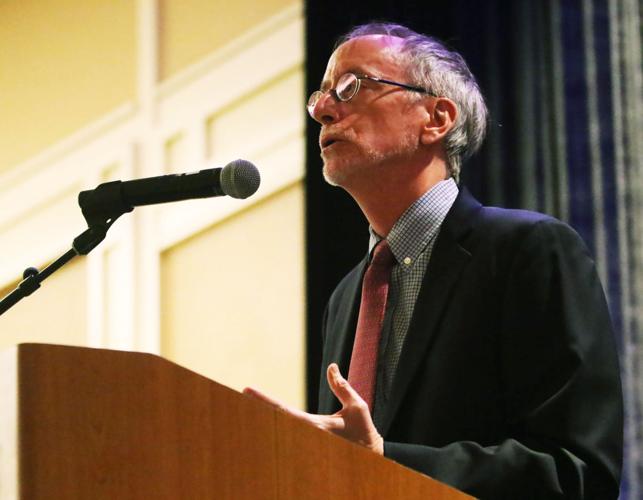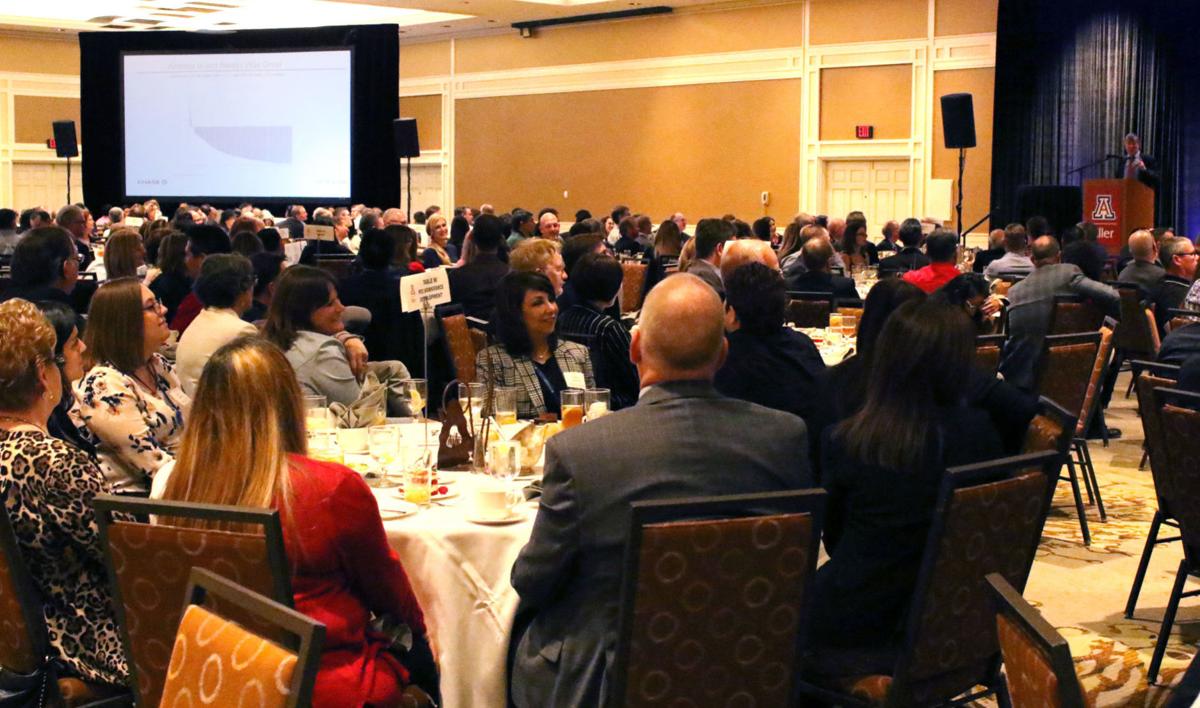Arizona, Tucson and Phoenix continue to post strong job gains this year after a solid 2018, far outpacing the national average, University of Arizona’s top economist said Friday.
But risks ahead including slowing global growth, decelerating consumer spending, and tariff and trade uncertainty, suggest a slowing economy in 2020 and 2021, George Hammond, director of the UA’s Economic and Business Research, said at the center’s annual outlook luncheon at the Westin La Paloma Resort and Spa.
A top economist for JPMorgan Chase said the U.S. economy remains strong despite global trade tensions and other headwinds, and it’s more likely that the economy will slow in the next year or two rather than plunge into a recession.
For now, Arizona and Tucson are flying high, Hammond told a packed luncheon crowd of about 600.
He expects the Tucson metro area to add a net 5,700 jobs this year for growth of 1.5%, up from growth of 1.2% last year and higher than the UA center’s forecast earlier this year.
That growth is expected to slow to 1.3% next year and 1.1% in 2021.
Arizona is forecast to add 75,700 jobs this year, for 2.7% growth, near last year’s growth of 2.8%, led by the Phoenix area with expected job growth of 3.3% this year.
The state, Phoenix and Tucson all had strong third-quarter job growth, with statewide jobs growing by 72,100 or 2.5% from third-quarter 2018 — Phoenix alone added 55,800 or 2.7% — and Tucson gaining 9,300 jobs, for growth of 2.5%.
In Tucson, education and health care added the most jobs over the year, with 3,800 new jobs, followed by leisure and hospitality (up 2,200), government (up 2,200), manufacturing (up 1,500), and construction (up 700).
The manufacturing gains are good news for Tucson, where major employer Raytheon Missile Systems added some 2,000 jobs over the last three years, since they tend to be higher-paying jobs, Hammond said.
“Over the past year or two, Tucson’s manufacturing job growth has been far above the national economy — the fastest manufacturing job growth since 2000,” he said, noting that the U.S. manufacturing job growth has slowed.
Looking ahead, Hammond said, the outlook for Arizona and Tucson is positive.
“The most likely scenario is for Tucson to continue to grow, but slow down,” he said.
Though the most pessimistic models show the U.S. economy falling into recession by the third quarter of 2020, Hammond said even that is not a reason for panic.
“If we were to fall into recession, it would be likely be much less severe than we experienced during 2007 to 2009,” he said. “We’re not seeing the same kind of (economic) imbalances now as we saw then.”
Jim Glassman, JPMorgan Chase managing director and head economist for commercial banking, said it may seem like the nation’s long-running economic expansion is bound to run out of steam and end in recession, likening the situation to the 11th inning of a baseball game.
Things like technology transformation fueling a major shift to online retail sales, factory automation, and trade disputes with China seem like challenges, but represent new market opportunities, Glassman said.
Glassman says the U.S. economy has been thriving in apparent defiance of some traditional indicators of recession.
“We should expect to see the economy slowing down but not going into recession — we’re settling into a more sustainable rhythm,” he said.
Some other takeaways from Friday’s outlook:
- Retail trade lost jobs in Tucson, while transportation and warehousing increased employment, as brick-and-mortar retailers continue to face pressure from online retailers, who are heavily investing in warehousing activity.
- Arizona’s population is rising rapidly, driven primarily by migration as birth rates decline. The state added 110,300 new residents last year, for a growth rate of 1.6% or more than double the nationwide pace, according to the Arizona Office of Economic Opportunity.
- Last year, the Tucson metro area added 8,100 residents, for 0.8% growth, which was slightly faster than the national pace.
- Income is rising at a solid pace in Arizona, but on a per capita basis gains are more modest. State personal income rose by 6.1% last year, which exceeded the national pace of 5.6%. However, on a per capita basis, personal income in Arizona, the Phoenix and Tucson areas rose at a slower rate than the U.S.
- Job and income gains fuel household consumption, which increased by 6.0% last year. Household spending is supporting continued gains in taxable sales.







